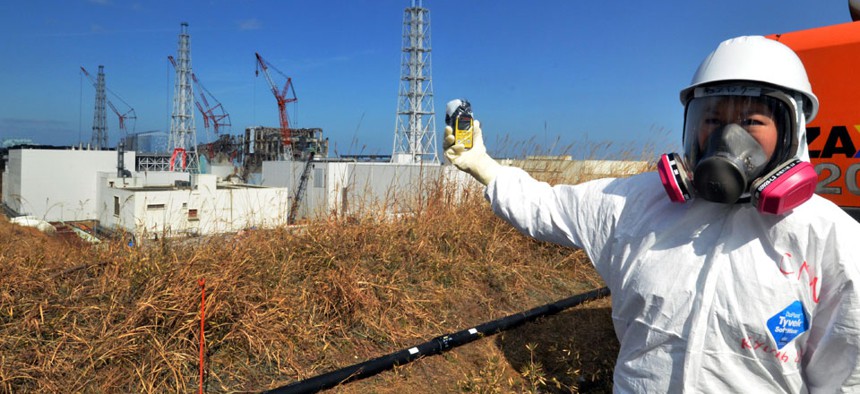Monitoring the Spreading Radiation From Fukushima in Real Time

A journalist checks radiation level with her dosimeter near stricken Fukushima Dai-ichi nuclear power plant of Tokyo Electric Power Co. Yoshikazu Tsuno/AP
A searchable map for the country updates every ten minutes with data from the Nuclear Regulatory Authority.
As the operators of the Fukushima nuclear power plant embrace the crazy-sounding (but not) plan to build an ice wall to contain radioactive water after a series of leaks and mishaps, concern is growing about the levels of radiation spreading to the surrounding area.
Japanese citizens and expats have been picking up their own, sometimes hand-soldered, Geiger counters and collecting radiation data since the Fukushima nuclear accident happened more than two years ago. Much of that data has been gathered and collated by SafeCast, a radiation-tracking project funded by donation, but it can only be updated as often as people physically go to areas and collect new readings.


